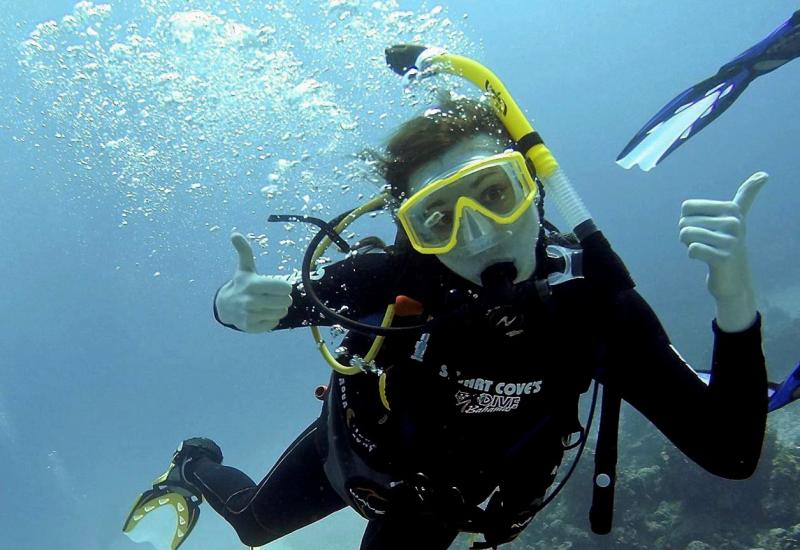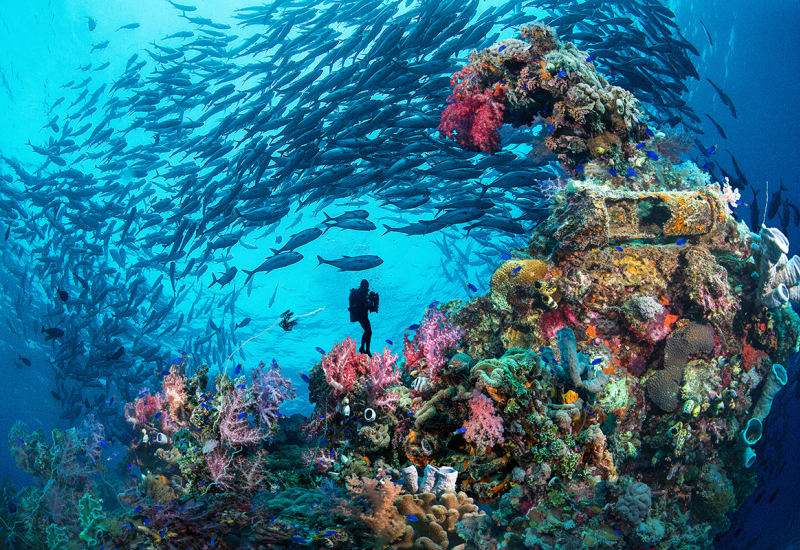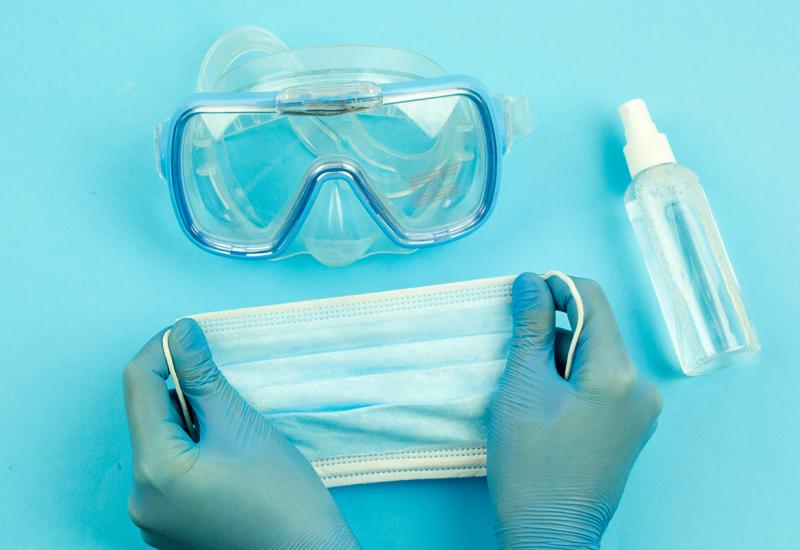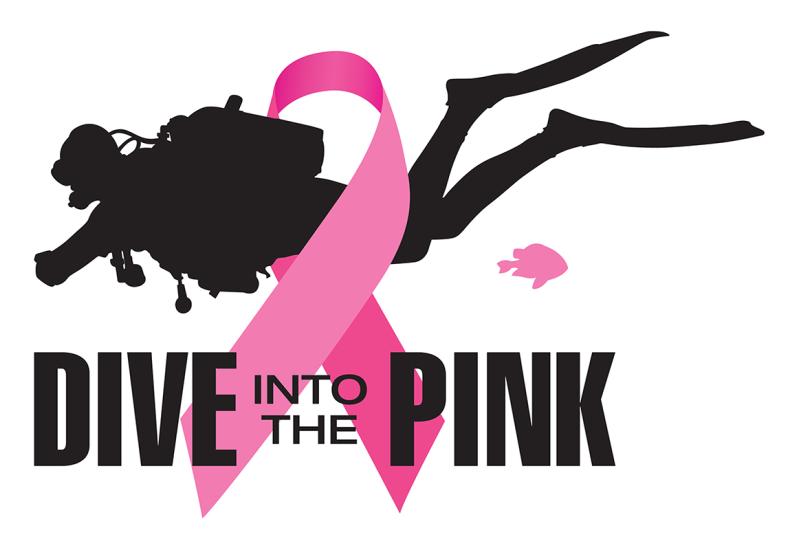Healthy Diving: Treating Coral Scrapes and Sea Urchin Wounds, Missed Safety Stops and Learning Breathing Techniques

Fire Coral in Indonesia
Shutterstock
Fire Coral Scars
I came into contact with what I believe was fire coral in the British Virgin Islands about five weeks ago. Thinking it wouldn't be much of a problem, I didn't see a doctor until the rash worsened several days later, after I returned home. I have been using a prescription cream, Cormax, for four weeks and the rash is about 80 percent better. However, the entire area is still visibly darker, almost like a burn scar, with a couple bumps. Is there something else I should do? Will this scar completely heal?
via e-mail
Coral scrapes do have a tendency to become both chronically irritated and infected. Occasionally, coral scrapes and cuts will have trouble healing and break out in a chronic dermatitis or a weeping wound. This is thought to be due to the persistent toxic or allergic effects of the small bits of coral (often microscopic) that are embedded in the wound at the time of the injury.
Initially, wounds should be flushed with large quantities of vinegar or whatever sterile fluid you have available. You should get a tetanus shot and treat the wound with a combination of triple antibiotic/steroid cream until healing occurs.
If the wound does not appear to be healing after 24 to 36 hours, check with your doctor to see if you need to undergo a procedure called debridement (removal of foreign bodies). Hyperpigmentation (dark color changes) is more difficult to manage and requires the assistance of a good dermatologist.
Cormax is the trade name for clobetasol, a topical steroid cream. It reduces or inhibits the actions of chemicals in the body that cause inflammation, redness and swelling. It is used to treat the inflammation caused by a number of conditions such as allergic reactions, eczema and psoriasis and would possibly be indicated for the coral dermatitis that you seem to have. People have varying reactions to the dermatitis and the medication. Most dermatologists are highly trained to manage conditions of this nature and a visit to one might be wise in the long run.
Missed Safety Stop = Near Miss?
The sixth Caribbean dive of our week started easily, but when I ran low on air, my fiance and I ascended from 40 feet to our safety stop. Although we ascended slowly, we missed 15 feet. After hovering around 10 feet for a minute, we surfaced. The water was choppy, a strong current pulled us around, the warm air had cooled and it was raining. We used a towel to keep us somewhat warm on the chilly 10-minute boat ride back. After rinsing our gear, we did a brisk walk/jog up 200 steps to our hillside bungalow to shower and warm up. My fiance mentioned that she had cotton mouth and was pretty thirsty. Shortly after she got out of the shower her fingers began to ache and were tingly. I ran back down to the dive shop and called DAN. They said my fiance had felt the tingling because she took a hot shower when she was cold--more of a circulation issue than DCS. A couple hours later, her hands felt fine and there has not been anything wrong since then. Should she get checked out by a dive physician anyway?
via e-mail
I don't think so. Coming up cold and tired is typical after a dive. Even though her ascent might have been rapid and irregular due to the wave action and surge, increasing the risk of both DCS and pulmonary barotrauma (and possible gas embolism), I think DAN made the right call. Both the run up the hill and the hot shower can possibly release bubbles in the tissues. However, your fianc?s clinical picture does not indicate DCS.
Inhale, Exhale
In the May issue, you told a new diver how she could make the transition from breathing through her nose to breathing through her mouth. I'm having the same problem, even after following your suggestion of first learning to inhale through my mouth and exhale through my nose. Do you have any other suggestions?
via e-mail
Try following these steps:
-
Set your mask aside for a moment. Using your snorkel, breathe through your mouth while gently lowering your body into the water until the water is just below eye level--your mouth and nose submerged. Initially you may need to exhale small amounts of air through your nose, but you will soon be able to inhale and exhale through your mouth into the snorkel without water intrusion. Take your time and take slow, deep breaths.
-
While keeping your mouth and nose under water, shift to a second stage regulator. It is normal during snorkel and regulator exchanges for small amounts of water to enter your mouth.
-
Once a series of these exchanges is mastered, repeat with your scuba mask in place, remaining in shallow water until you are fully comfortable with the exchanges.
-
With your BC partially inflated, swim around the shallow end of the pool while doing snorkel-to-regulator exchanges until you are comfortable performing the skill.
5-Step Plan for Sea Urchin Wounds
by Arlene Perlmutter
The dangers of sea urchins are well-known to divers. Not only do their needles contain venom that causes burning, swelling, redness and pain, but more severe complications can include infection, numbness or even paralysis. An allergy to the venom can be life-threatening.
If you have a run-in with a sea urchin, follow these steps:
-
Elevate the affected area and apply a pressure bandage. This helps slow the absorption of any venom in the wound. Do not apply a tourniquet.
-
Immerse the wound in very hot water (115F), or as hot as you can tolerate, for 30 to 90 minutes. Many marine toxins are proteins which are destroyed by heat. A hot soak can dramatically reduce the pain and damage caused by a sting.
-
Control the pain. The pain from marine stings can be excruciating and lead to shock. Usually only local anesthetics are needed, but, in rare cases, systemic pain relievers or narcotics may be needed.
-
Cleanse the wound with an antiseptic solution. Washing out remaining venom and pieces of spine will help minimize damage, speed healing and prevent infection. Leave an inaccessible spine alone only if it has not penetrated a joint, nerve or blood vessel.
-
Seek appropriate medical care. Some wounds require surgical cleansing and repair, antibiotics for infection control, and possibly antivenins and life support for severe stings. It is not always immediately obvious which stings will need more intensive medical care, so if possible, get care for all stings.
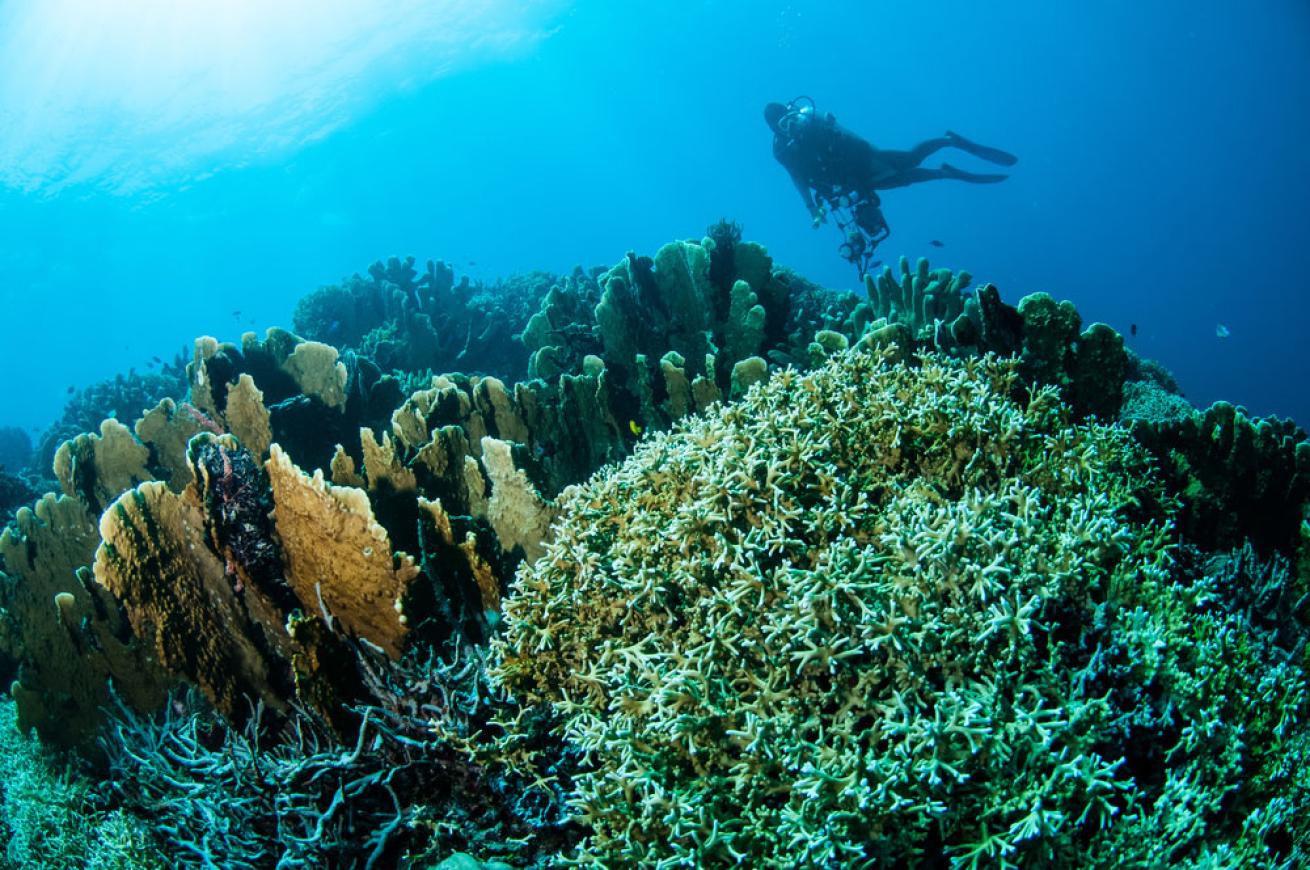
ShutterstockFire Coral in Indonesia
Fire Coral Scars
I came into contact with what I believe was fire coral in the British Virgin Islands about five weeks ago. Thinking it wouldn't be much of a problem, I didn't see a doctor until the rash worsened several days later, after I returned home. I have been using a prescription cream, Cormax, for four weeks and the rash is about 80 percent better. However, the entire area is still visibly darker, almost like a burn scar, with a couple bumps. Is there something else I should do? Will this scar completely heal?
via e-mail
Coral scrapes do have a tendency to become both chronically irritated and infected. Occasionally, coral scrapes and cuts will have trouble healing and break out in a chronic dermatitis or a weeping wound. This is thought to be due to the persistent toxic or allergic effects of the small bits of coral (often microscopic) that are embedded in the wound at the time of the injury.
Initially, wounds should be flushed with large quantities of vinegar or whatever sterile fluid you have available. You should get a tetanus shot and treat the wound with a combination of triple antibiotic/steroid cream until healing occurs.
If the wound does not appear to be healing after 24 to 36 hours, check with your doctor to see if you need to undergo a procedure called debridement (removal of foreign bodies). Hyperpigmentation (dark color changes) is more difficult to manage and requires the assistance of a good dermatologist.
Cormax is the trade name for clobetasol, a topical steroid cream. It reduces or inhibits the actions of chemicals in the body that cause inflammation, redness and swelling. It is used to treat the inflammation caused by a number of conditions such as allergic reactions, eczema and psoriasis and would possibly be indicated for the coral dermatitis that you seem to have. People have varying reactions to the dermatitis and the medication. Most dermatologists are highly trained to manage conditions of this nature and a visit to one might be wise in the long run.
Missed Safety Stop = Near Miss?
The sixth Caribbean dive of our week started easily, but when I ran low on air, my fiance and I ascended from 40 feet to our safety stop. Although we ascended slowly, we missed 15 feet. After hovering around 10 feet for a minute, we surfaced. The water was choppy, a strong current pulled us around, the warm air had cooled and it was raining. We used a towel to keep us somewhat warm on the chilly 10-minute boat ride back. After rinsing our gear, we did a brisk walk/jog up 200 steps to our hillside bungalow to shower and warm up. My fiance mentioned that she had cotton mouth and was pretty thirsty. Shortly after she got out of the shower her fingers began to ache and were tingly. I ran back down to the dive shop and called DAN. They said my fiance had felt the tingling because she took a hot shower when she was cold--more of a circulation issue than DCS. A couple hours later, her hands felt fine and there has not been anything wrong since then. Should she get checked out by a dive physician anyway?
via e-mail
I don't think so. Coming up cold and tired is typical after a dive. Even though her ascent might have been rapid and irregular due to the wave action and surge, increasing the risk of both DCS and pulmonary barotrauma (and possible gas embolism), I think DAN made the right call. Both the run up the hill and the hot shower can possibly release bubbles in the tissues. However, your fianc?s clinical picture does not indicate DCS.
Inhale, Exhale
In the May issue, you told a new diver how she could make the transition from breathing through her nose to breathing through her mouth. I'm having the same problem, even after following your suggestion of first learning to inhale through my mouth and exhale through my nose. Do you have any other suggestions?
via e-mail
Try following these steps:
Set your mask aside for a moment. Using your snorkel, breathe through your mouth while gently lowering your body into the water until the water is just below eye level--your mouth and nose submerged. Initially you may need to exhale small amounts of air through your nose, but you will soon be able to inhale and exhale through your mouth into the snorkel without water intrusion. Take your time and take slow, deep breaths.
While keeping your mouth and nose under water, shift to a second stage regulator. It is normal during snorkel and regulator exchanges for small amounts of water to enter your mouth.
Once a series of these exchanges is mastered, repeat with your scuba mask in place, remaining in shallow water until you are fully comfortable with the exchanges.
With your BC partially inflated, swim around the shallow end of the pool while doing snorkel-to-regulator exchanges until you are comfortable performing the skill.
5-Step Plan for Sea Urchin Wounds
by Arlene Perlmutter
The dangers of sea urchins are well-known to divers. Not only do their needles contain venom that causes burning, swelling, redness and pain, but more severe complications can include infection, numbness or even paralysis. An allergy to the venom can be life-threatening.
If you have a run-in with a sea urchin, follow these steps:
Elevate the affected area and apply a pressure bandage. This helps slow the absorption of any venom in the wound. Do not apply a tourniquet.
Immerse the wound in very hot water (115F), or as hot as you can tolerate, for 30 to 90 minutes. Many marine toxins are proteins which are destroyed by heat. A hot soak can dramatically reduce the pain and damage caused by a sting.
Control the pain. The pain from marine stings can be excruciating and lead to shock. Usually only local anesthetics are needed, but, in rare cases, systemic pain relievers or narcotics may be needed.
Cleanse the wound with an antiseptic solution. Washing out remaining venom and pieces of spine will help minimize damage, speed healing and prevent infection. Leave an inaccessible spine alone only if it has not penetrated a joint, nerve or blood vessel.
Seek appropriate medical care. Some wounds require surgical cleansing and repair, antibiotics for infection control, and possibly antivenins and life support for severe stings. It is not always immediately obvious which stings will need more intensive medical care, so if possible, get care for all stings.

